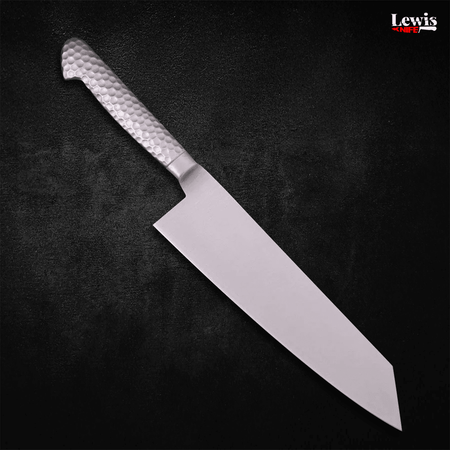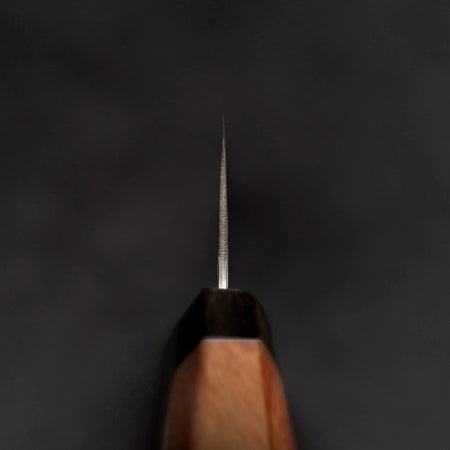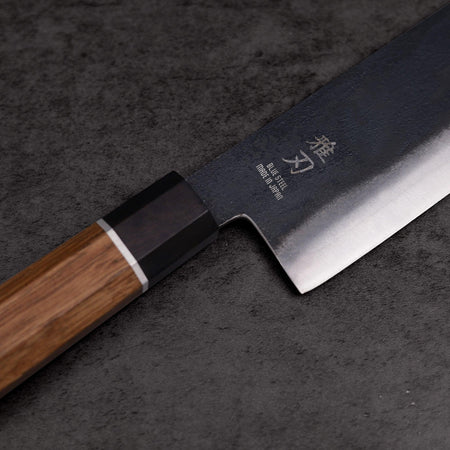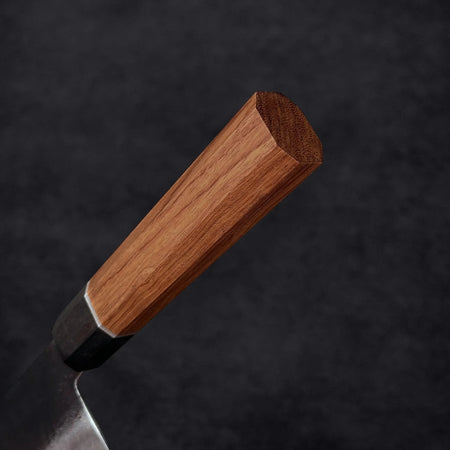A Bunka knife (文化包丁, Bunka Bōchō) is a versatile Japanese kitchen knife, designed for everyday tasks like chopping, slicing, and mincing. It features a flat, wide blade and a reverse-tanto "k-tip" for precision work, making it ideal for vegetables, meats, and intricate cuts.
Bunka Knife
Filter
14 products
-
Sort by
A Bunka knife (文化包丁, Bunka Bōchō) is an all-purpose kitchen knife that first emerged in Japan during the Meiji era (late 1860s to early 1900s). This was a time when Western and Japanese cooking methods were blending together. Its name translates as "cultural kitchen knife", with Bunka also meaning modern or efficient. This is a fitting label for a knife born of innovation. Japanese Bunka knives are usually in the 160mm–180mm size range, with a 165 mm blade being particularly popular among home cooks.
Built as a common variation of the popular Santoku knife, the Bunka features a flat, wide blade well-suited for cutting vegetables and everyday prep. What sets it apart is the reverse-tanto "k-tip", which enables clean detail work, like brunoise cuts, scoring, or trimming sinew. Its performance features a double-bevel edge sharpened to about 10–15°. This design allows for sharper and more precise slicing than many Western-style chef knives.
The Bunka is a versatile knife tackling a wide range of common kitchen tasks like chopping, slicing, dicing, and mincing meat, fish, herbs, and especially vegetables. Its flat profile supports push-cutting and tap-chopping techniques, and the k-tip gives it extra nimbleness for intricate precision work. The blade’s height also provides excellent knuckle clearance and makes scooping chopped ingredients a breeze.
In summary, the Bunka chef knife is a stylish and useful tool. It is great for cutting vegetables, trimming proteins, and doing most kitchen prep tasks. If you need a reliable knife for everyday cooking, the Bunka is a great choice with its versatility and ease of use.
FAQs
-
Both knives are versatile, but the Bunka features a reverse tanto (K-tip) for precision, while the Santoku has a rounded sheep's foot tip for general chopping.
-
The Bunka typically has a double-bevel edge and is shorter, while the Kiritsuke is a longer, single-bevel knife with a more pronounced reverse tanto tip.
-
A bunka knife is used for precise slicing, dicing, and chopping; care involves hand-washing, immediate drying, and regular honing to maintain its sharp edge.












